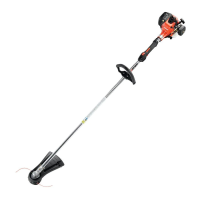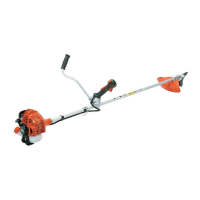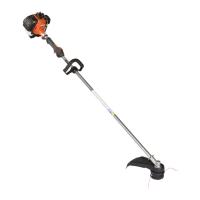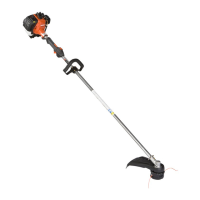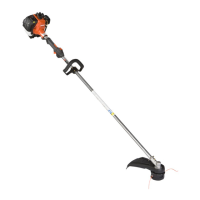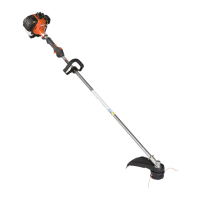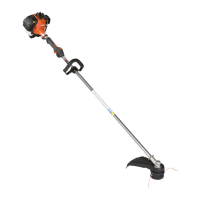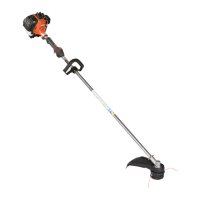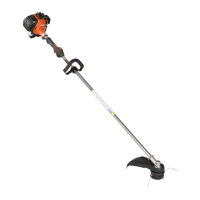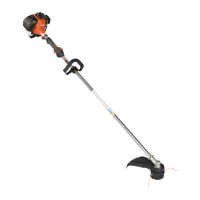OPERATION SRM-2320T
28 X7732278300
© 08/2019 ECHO Inc.
Applications
Nylon line heads may be used for trimming, scything, edging, and scalping
of grass and light weeds.
Trimming
Feed the spinning line into the material to be cut. Tilt the line head to one
side to direct cutting debris away from you:
• Model SRM/PAS/SB/TX/C (Straight shaft, counter-clockwise line head
rotation) - Tilt the cutting head down on the right side (muffler side) while
cutting to direct cutting debris away from operator. Feed the line gradually
into the material you wish to cut, avoiding contact with fences or other
barriers.
Scything
Scything - Swing the cutting head in a level arc, gradually feeding the line
into the material being cut. Move forward with each arc to cut a swath. Width
of cutting swath depends on arc. Use a larger arc for a wider swath, or a
smaller arc for a narrow swath. Keep line head tilted to direct cutting debris
forward or away from you.
Operating Techniques
• Debris flows in direction of line head rotation. Change line head position
to assure debris flow is directed away from operator.
• Keep cutting line away from wire fences to avoid entanglement.
• Operate trimmer only with cutting head below knee height.
Reaction Forces
Push or Pull - Kickback or Kickout
During normal use, operating a brushcutter with a circular metal blade can
produce sudden strong reaction forces that are difficult to control. Strong
reaction forces can cause a loss of balance or loss of control of the
equipment, resulting in serious injury to operator and bystanders.
Understanding what causes these reactive forces may help you to avoid
them, and can help you to maintain control of the equipment if you
experience a sudden reaction during cutting. Reactive forces occur when
the force being applied by the cutting teeth of a blade meet resistance, and
some of the cutting force is directed back toward the equipment. The greater
the cutting force or the amount of resistance, the greater the reactive force.
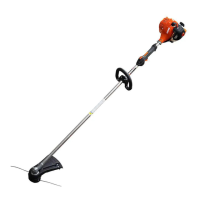
